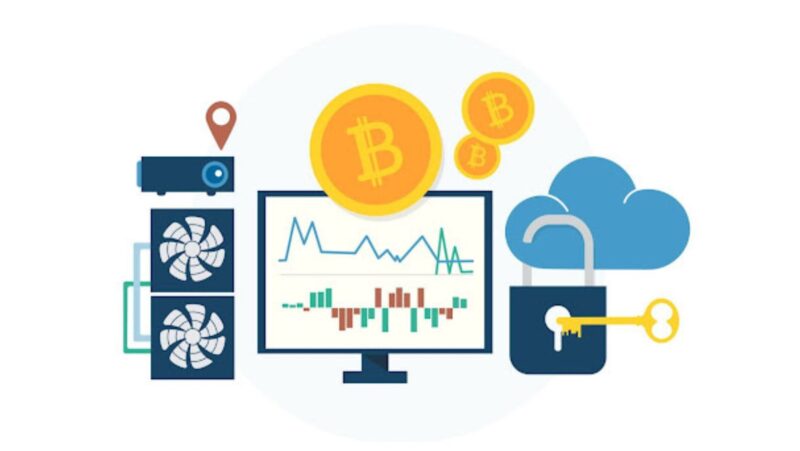
Dropbox for Salesforce is a powerful tool that allows admins to easily manage, access and sync data in Salesforce with Dropbox.
This tool’s advanced admin settings provide:
- More options for controlling data access.
- Setting up triggers and automations.
- Creating custom security settings.
In this article, we will discuss how to effectively use the advanced admin settings of Dropbox for Salesforce.
Dropbox for Salesforce: Advanced admin settings
Dropbox for Salesforce is a powerful tool that allows users to transfer and manage files between Salesforce and Dropbox more effectively. It enables users to streamline their sales process workflow, keep an accurate audit trail, collaborate efficiently, and store large files in the cloud.
Dropbox for Salesforce offers multiple features to help users get the most out of their data. For example, files can be shared with assigned permission levels, team members can discuss at specific points within a file, documents can be previewed before being transferred, activity logs provide an audit trail of document updates and changes, objects and records can be easily linked to files in Dropbox, teams can take advantage of the “Shared with me” feature for streamlined file access and collaboration. Additionally, Dropbox for Salesforce provides integration support for Gmail links to allow direct access between Dropbox folders and Gmail messages.
By connecting Salesforce with Dropbox through this app additional efficiency is achieved by creating easy pathways that allow seamless data transfers between the two systems. Using this app users can quickly transfer documents between these two platforms without any hassle or worry about maintaining secure access rights. Additionally, this tool offers much easier scalability as businesses continue to see growth or changes within their organisation and additional flexibility should any technical issues come up. With help from Dropbox’s intuitive user interface, businesses can utilise Salesforce more profoundly than ever before, which adds serious value both inside and outside when engaging customers or vendors in projects.

Setting Up Your Dropbox for Salesforce
Salesforce and Dropbox can be powerful tools to help you get the most out of your data, but setting up your Dropbox for Salesforce integration may seem overwhelming. To make the process simpler and more efficient, you can use advanced admin settings to customise the setup of your Dropbox for Salesforce.
Let’s look at the steps to help set up your Dropbox for Salesforce.
Connect Dropbox to Salesforce
Salesforce is a powerful CRM platform with built-in support for Dropbox for DEV. This integration makes it easier and faster to sync documents stored in Dropbox to Salesforce opportunities and other records. By connecting these platforms, users can store customer data and documents from Salesforce in their Dropbox account, manage sharing links, view previews of files within Salesforce, edit a document within Dropbox and reflect the changes on Salesforce records in real time, and sync files directly from your Dropbox account into Salesforce.
To set up your Dropbox for Salesforce, follow these steps:
1. Log into your salesforce account
2. Click on “Settings”
3. Select “Integration” at the top
4. Under Connected Apps section click “New”
5. Find the DropBox Connected App page
6. Check all boxes, select permissions and click “Save”. This will sync Data Sources between both systems associated with an individual user or entire organisation
7. Once connected, you can associate folders from Dropbox to any object within Salesforce such as an opportunity or lead record which will automatically upload new document created on sales opportunities when saved or moved into that folder
8. You can also set rules for how files should be synced so that changes made in one application (such as a comment added to a file) are reflected in the other app (as an example that comment would appear inside of a linked sales opportunity).

Set up folder sharing
Once you’ve set up your Dropbox for Salesforce account and connected it to your Salesforce instance, you can start sharing folders and files. To do this, you must create a folder in your account or a team folder and then share it globally with the “Dropbox link” option. You can then add users as collaborators by entering their email addresses.
Before setting up folder sharing, it is important to know the type of data allowed to be stored in those shared folders. Data that contains sensitive or personally identifiable information (PII) should not be stored in Dropbox for Salesforce shared folders due to security vulnerabilities. With this in mind, ensure that any new folder you create is given specific parameters so that only authorised personnel can access sensitive data within it:
- name and describe the folders accurately;
- specify user permissions, such as read/write/delete;
- create private subfolders;
- control access with member profiles; and
- delete old folders when no longer needed.
Once these settings are established, ensure they are regularly monitored and updated to increase security measures. By taking these steps before setting up folder sharing, you can help protect your customer’s confidential information from getting into the wrong hands — and ensure compliance with industry regulations.
Set up folder permissions
Setting up folder permissions correctly is critical to properly use Dropbox for your Salesforce account. To start, create a folder in your Dropbox account to store all of your Salesforce documents. To do this, go to Files on dropbox.com, click Create Folder and fill out the details. You can then share this folder with anyone you’d like by clicking Share and selecting the people you want to have access.
Once the initial setup is complete and you have given users access to your folders, it’s important to set up proper permissions so everyone can work efficiently with their assigned jobs in mind. Dropbox allows four types of access — Viewer, Editor, Owner and Blocker — each granting different levels of control over the shared folder and its contents.
Viewers can see all the contents within the shared folder but cannot edit or delete files or folders that are not theirs. Editors may change any existing content but do not have administrative privileges; Owners have full administrative rights and can create new files or folders within the shared folder. Finally, Blockers are initiated when someone has had their access revoked; Blockers will be automatically blocked from attempting to log in or send an invitation if they attempt to join again later.
To adjust permissions for an individual user or group of users, open either their profile page (for individual) or team page (for groups) in your Dropbox account page; once there select Manage Members → Access Level → View/Edit/Owner/Blocker → Apply changes as necessary. You can also change permissions that apply across an entire team by following similar steps starting from their Team Page instead of navigating through members profiles individually.
Following these steps allows you to easily customise who can access specific parts of your Salesforce data on Dropbox quickly and accurately—ensuring that your files stay safe while providing efficient collaboration for those involved in project management tasks for various client needs.
Advanced Admin Settings
Cloud-based solutions like Dropbox for Salesforce can provide many advantages for businesses, such as increased mobility, better collaboration and security. In addition, with advanced admin settings you can tailor your Dropbox for Salesforce experience to ensure it works best for your organisation.
In this section, we’ll look at how to customise your advanced admin settings.
Set up user access levels
Establishing the right user access levels is fundamental when setting up Dropbox for Salesforce. To ensure that the system remains secure, you will want to closely control who has access and what level of access they have. Creating user roles allows you to provide sufficient administrative permissions while keeping your system secure.
User roles define each user’s operations, such as file sharing and document collaboration tasks or users with just read-only access. You can even assign tasks and requests or allow other specific tasks like versioning or content search ability. By configuring these roles properly, Dropbox for Salesforce can be structured for network efficiency and optimised security based on an individual needs. In addition, this ensures that only authorised personnel can access critical customer data, analytics, and sales reports.
To manage individual user roles efficiently within Dropbox for Salesforce, each user should be assigned one of three basic levels of account management: Administrator Level Permissions, Limited Access User Roles, or Read Only Access Levels. Administrators will have full administrative access rights which includes creating new users by assigning roles; editing existing users; granting/revoking permissions; data extraction/upload rights; creating content type facets; defining custom fields; setting up automation notifications; control over content library organisation structure; assignment of daily activity limits per role; defining widget locations per layout preference and managing workflow operations. Limited Access User Roles allow power users to perform some functions beyond normal restricted read-only accessibility while still providing secure control over customer data protection and limited changes via permission policies established by company policy makers. Finally, read Only Access Levels are designed for end-users consuming customer-facing resources with limited accessibility media driven specific usage scenarios such as filling an embedded form on a webpage controlled by designated view rights parameters without the ability to modify any core customer files beyond those designated in their permission profile parameters provided during setup process initially configured by company administrators.

Set up file security
Good data and file security is often the key to successful Dropbox for Salesforce implementation. Setting up file security involves creating a risk profile, gaining approval from stakeholders, and ensuring that administration permissions are adequately applied. Before going further, you must ensure the appropriate file security settings are in place.
First, determine who needs access to which files, who can edit those files, and when file access can occur. When setting up user authentication, consider sampling user views before committing to using the same permission level for all users. In some cases it may be better to allow restricted access on a need-to-use basis. Taking the time now to create these profiles will help ensure your data remains secure over time.
Then evaluate what access privileges individual users or groups should have—read/write or read only? This is an extremely important step, as granting too much read/write access could cause data breaches if those privileges are utilised inappropriately. It is recommended that administrators establish different levels of access based on specific tasks that each user must perform in the system to reduce any risk or vulnerability associated with improper data use or manipulation.
Finally, determine whether each user needs full administrator access or should be able to make changes within their user profiles within Dropbox for Salesforce’s platform. Ensure each user is trained on how far their Administrator capabilities extend and which areas each admin should be allowed to manage within your organisation’s system – administrative controls vary by vendor so create these documents before allowing individuals unsupervised accounts setup privileges.
Then finally when it comes time for you administration to review these settings regularly, double check against your risk profile and permissions model so that appropriate safeguards remain in place at all times against unauthorised use of sensitive data or manipulation of system settings by malicious actors.
Configure file retention policies
The Admin Console of Dropbox for Salesforce has a setting to define file and folder retention policies. This feature enables the admin to enforce custom rules which control how long files and folders are kept in Dropbox, before they are automatically moved into their local Trash.
The configuration itself is pretty straightforward: Admins can configure file retention policies for different folders in their organisation, as well as items that meet certain criteria that have to be specified such as creation date and user permission level. In addition, the rules can be set up for items shared with external users or within the team. For example, an admin might decide to keep items modified or created more than 90 days ago in the company’s trash bin, or a rule that guarantees that sales reports are kept available for at least 6 months after creation.
Configuring file and folder retention policies for Dropbox for Salesforce is critical to make sure that important documents remain accessible according to the company’s data governance requirements, while allowing irrelevant items being automatically moved into the trash without manual intervention by the admins or users.
Troubleshooting
You may need to troubleshoot the issue if you are having trouble with your Salesforce admin settings. Luckily, Salesforce and Dropbox have a few tips and tricks to help you get started.
This section will cover the most common tips and tricks on using Dropbox to manage your Salesforce Admin settings.
Common error messages
Dropbox for Salesforce is a great tool for managing and sharing files with your team. However, like any other cloud-storage system, Dropbox for Salesforce may occasionally throw up errors that can be daunting to deal with. Below are some of the most common error messages you may encounter when using Dropbox for Salesforce, and advice on how to resolve them:
Error 1: “Authentication Failed” This error generally indicates that you have entered incorrect credentials while logging into your Dropbox account. Please double check these credentials and try again. If this continues to be an issue, it is likely that your subscription has expired or been revoked and must be renewed or reinstated before you can start using Dropbox again.
Error 2: “No Access to Salesforce Records” This message appears when you do not have access to the records of the organisation you are trying to access from within Salesforce. To resolve this issue, ensure you have appropriate permissions in Salesforce. You may also contact an administrator within your organisation about the issue, as they may need to adjust your user rights so that you can access these records.
Error 3: “Dropbox Server Error” indicates a problem connecting to Dropbox’s servers and accessing its database on the backend. This could be due to server issues or database connection issues from our end. If this persists, please reach out to us via our support chat channel so we can troubleshoot and diagnose what might have caused this issue – it could be something as simple as a network latency problem or a bug in our system that needs further investigation by our engineering teams.
Tips for resolving errors
When troubleshooting integration errors between Salesforce and Dropbox, it is important to understand the problem from both the Salesforce and Dropbox perspectives. Below are some tips for resolving errors encountered when setting up or using the Dropbox for Salesforce integration.
1. Start by checking your server logs in both Salesforce and Dropbox to see if there were any problems during the setup or usage process. Additionally, check for any notifications in either app that may indicate an issue with your setup process.
2. It’s important to configure the integration properly on both servers to sync data correctly. Make sure you have full permissions on each side to transfer files without error.
3. If dealing with complex data sets, consider using a third-party tool like Zapier or MuleSoft to manage integrations between Salesforce and Dropbox more effectively.
4. If you’re dealing with an API limit issue in Salesforce, try adjusting your API call limit to increase performance on the platform or reduce activity outside of peak times if needed.
5. Consider pairing your integration with an external identity provider like Google Firebase or Okta if you’re using a complex platform setup across multiple systems and regions where authentication is required for syncing files between your services securely and efficiently.
6. Consult a certified professional if you require more advanced troubleshooting measures against security issues related to the transfer of sensitive data such as HIPAA compliance requirements within cloud environments when integrating services across different platforms.












